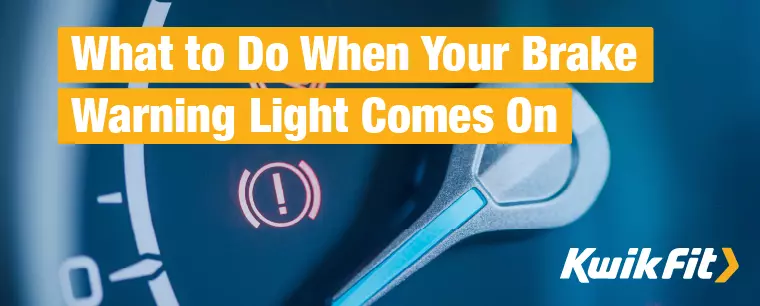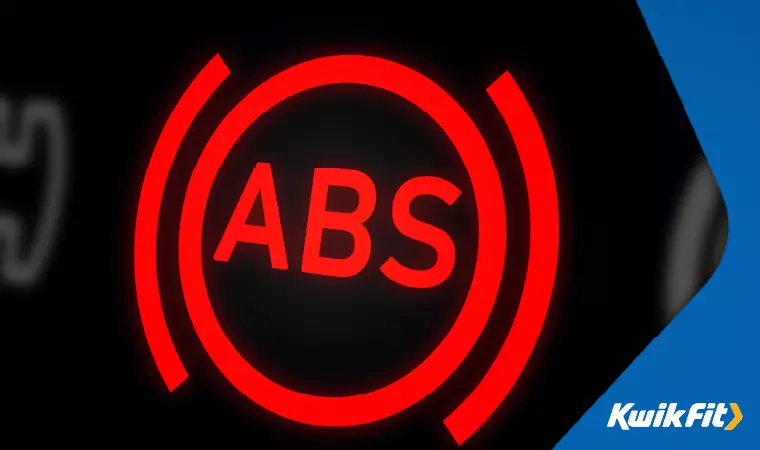What to Do When Your Brake Warning Light Comes On
Jack Dreyer | Wednesday 8th February 2023 5:00pm

Itís always alarming when a warning light suddenly appears on your dashboard, but itís important not to panic if it happens. In many cases, you can continue driving as long as you get the issue checked out quickly. Other situations may require you to safely pull over, stop, and seek assistance. If in doubt, always stop.
The unexpected appearance of brake warning lights can be among the most worrying Ė but does it necessarily mean that your brakes are unsafe to use? Letís take a look at what to do if your brake warning light comes on while youíre driving.
Where is the brake warning light and what does it look like?
When you get a new car, you should always take the time to familiarise yourself with all of the controls and settings. This includes the lights on the dashboard. Consult your ownerís manual if you need help understanding any of these lights or what they mean.
The location of the brake warning light on the dashboard will vary from vehicle to vehicle, but it tends to look the same in every car. The symbol is a circle containing an exclamation mark, and the circle is surrounded on each side by what look like rounded brackets. In some vehicles, there may even be the word Ďbrakeí under or next to this.
The light may behave differently depending on the vehicle. In some cars lights will flash to indicate urgency, while in others they may display in different colours to indicate how serious the issue is. For example, your brake warning light may appear in amber, orange, or another colour (such as blue or green) to let you know that something needs attention, while red usually means take immediate action. Itís important to consult your carís specific ownerís manual to make sure you know what each colour signals.
Why do brake warning lights come on?
Your brake warning lights may start to flash, or display in amber or red, in the following situations:
- Your brake fluid has started to leak.
- The car is experiencing a sensor failure, which erroneously triggers the brake warning light.
- The brake pads have become overly worn and need replacing.
- The hydraulic brake circuits have failed.
You wonít always be able to tell what the issue is while youíre driving, as you canít always feel a problem when applying the brakes. However, itís very important to take warning lights seriously. As soon as you can, get your brakes checked out by an experienced technician.
Do I need to stop driving when the brake warning light comes on?
IIf you ever feel unsafe or not in full control of the vehicle while driving, you should always find a safe place to pull over and stop. But a brake warning light doesnít always mean you need to urgently stop. Hereís what to do in each situation:
- If your brake warning light comes on but your brakes feel normal, and brake fluid levels are normal ó you can continue driving to a repair centre. It could simply be a fault with the sensor.
- If the warning light flashes but you are finding you have to press the brake further than usual ó you should safely pull over as soon as you can and call your breakdown service for assistance.
Once youíve stopped, you can check the brake fluid levels. Top up if you need to and give the brakes a test, if itís safe to do so. If the warning light goes off and your brakes feel normal, you can cautiously set off again and head for a repair centre. Itís always worth getting your brakes checked out if the warning light has come on, even if you feel youíve fixed the problem.
ABS warning lights

Most modern vehicles are fitted with an anti-lock braking system (ABS). This is a standard safety feature, which is designed to stop the wheels from locking up in situations where you need to brake urgently. This anti-skid system helps the car to maintain a good grip on the road surface, so that the driver can retain control.
As well as a brake warning light, your dashboard is also likely to have an ABS warning light. This one is easy to identify as it usually contains the initials ĎABSí inside a circle, surrounded by what look like curved brackets to either side.
If your ABS warning light flashes or displays in a different colour while youíre driving, hereís what to do. Just like with any other warning light, itís crucial to stay calm. In most cases, you can continue driving when your ABS light comes on. Try to cautiously make your way to a repair centre to find out what the problem is. It could just be a sensor fault, but you never know.
If itís wet or icy weather, you should be extra careful when continuing your journey. The roads may be slippery and braking distances will increase, so be sure to drive slowly and carefully until you reach home or a repair centre.
The only exception is if you hear any unusual noises coming from the wheels. In this situation, you should always find a safe place to pull over and stop. You may want to check your ownerís manual for further information, or call your breakdown service just to be on the safe side.
What if both brake and ABS warning lights come on?
Thereís only one thing to do if both of these warning lights start to flash at once. Safely stop the vehicle as soon as you can and call your breakdown service. The presence of both brake and ABS warning lights could mean that your brakes have suffered a major fault. If you continue driving, youíll be risking the safety of other road users as well as yourself.
While itís important to stop as soon as you can, remember that your brakes may not be functioning properly. Stay calm and try to slow down gradually, using your brakes gently and avoiding sudden or hard braking at all costs. You shouldnít drive the car again until the fault is fixed.
Brakes playing up? Weíre here to help. Find your nearest Kwik Fit centre and book in for an appointment with one of our expert technicians.
Any facts, figures and prices shown in our blog articles are correct at time of publication.
Featured Articles
Is it Illegal to Drive With One Headlight?
Saturday 19th July 2025
Wondering if itís illegal to drive with one headlight? Learn about the safety risks and penalties of illegal blown bulbs and why you should fix them promptly.
Air Con in EVs & Hybrids: Experts Answer Your Questions
Monday 30th June 2025
Does air con drain EV batteries? Can you use the air con while charging an electric car? Find out the answers to these questions & more from Kwik Fitís experts.
Why Is Your Car Making a Noise? Fixes & Tips
Friday 13th June 2025
When your car starts making unexpected noises, it can certainly be quite disconcerting; it may be nothing to worry about, but hereís what you need to know.









